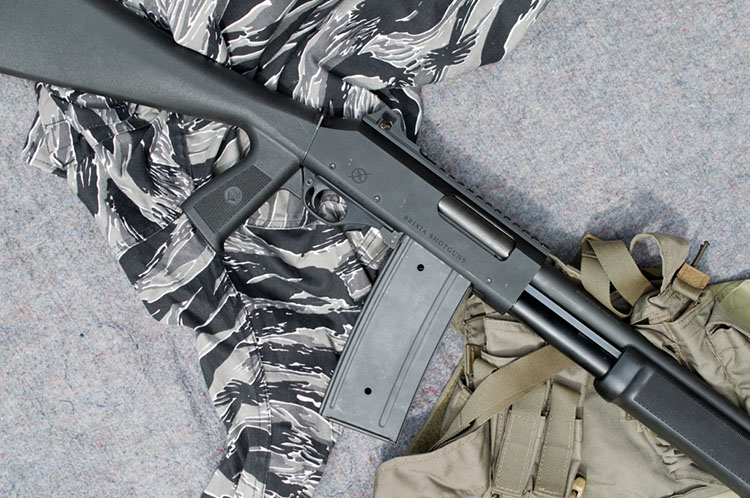
The Brixia PM-5 isn’t just like the Valtro PM-5. It is the Valtro PM-5. And that’s awesome.
Depending on your age, you might remember the guns of the nineteen-eighties pretty fondly. Or you might not remember them at all. Or, potentially, you may recall them as newfangled contraptions designed to beset and annoy right-thinking wood-and-blue-steel wheelgun men.
If the 1980s were dark days for you, in which guns began to turn a horrible black colour and everything that used to be wood turned to plastic, stop reading. This review is going to haunt your dreams because the Valtro PM-5 was 1980s exotica and Brixia is bringing it back, big time.
If you’re too young to understand what we’re talking about and every AR-15 you’ve ever seen had forty inches of rail space and came in five different colours, each one of which had a stupid, multi-word name like Burnt Bronzed Earth or Urban Fog Wolf, get ready to face some harsh reality: the 1980s had guns that were every bit as high-speed, low-drag tactical as the modernized tactical shotguns of today.
And if you look back on the 1980s as a magical, storybook era of two-tone 1911s, hand checkering, Milt Sparks leather, Jeff Cooper’s modern pistol technique, and the awesome beginnings of mainstream black rifle culture, pour yourself a whiskey and strap in. The Valtro PM-5 is back, courtesy of the Italian shotgun manufacturer Brixia, and it’s been lightly updated to integrate with the current generation of optics. We love it when a plan comes together.
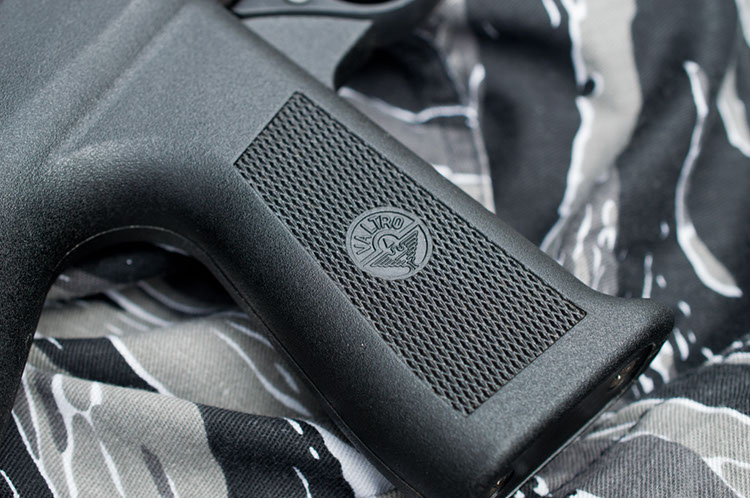
But what happens when a new manufacturer doesn’t just buy the rights…they buy the entire production line?
That’s right, Brixia isn’t just copying a successful design. They restarted production on a successful manufacturing line. And the results are almost exactly what you’d expect, with a single, but unfortunately significant, issue.
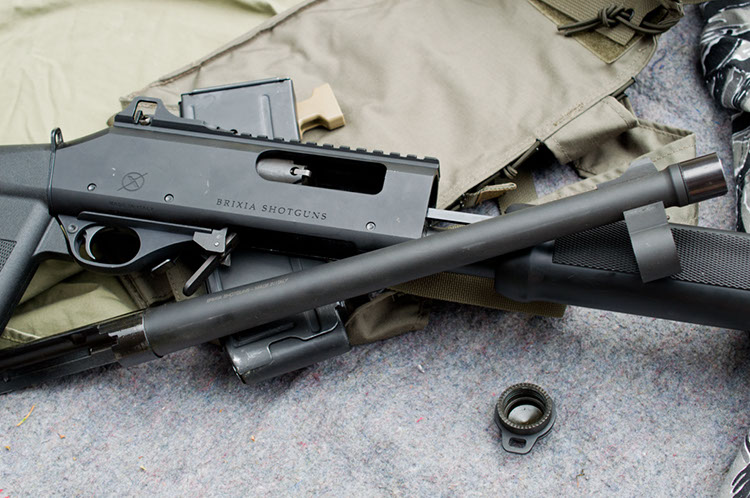
Over time, of course, its mystique grew, in no small part because the simple addition of the detachable box magazine solves the primary issue with shotguns for use in a defensive role: reloading speed. And, of course, the build quality of Italian shotguns is so famous that the PM-5 could bask in the general aura of desirability that shone down on it.
And the PM-5 itself was no slouch. They had a gloriously smooth action, intelligent controls, and components were machined with a high degree of precision. In many ways it was exactly the shotgun many users should have been looking for when they bought Remingtons and Mossbergs for home defense, but it fell prey again to its cost and lack of availability. Valtro was slow to supply magazines, which wore out over time as magazines do, and in some countries, it faced serious competition from the Saiga 12, a Kalashnikov-based semi-automatic shotgun, which ate the PM-5’s market share among tactical shotgun users and 3 Gun competitors. Despite a nearly thirty year production run, the PM-5 was discontinued in 2012. For many shotgunners, this went by almost unnoticed, the rarity of the gun (and worse, the rarity of the magazines) having ruled it out as anything more than a collector’s item. For PM-5 owners, the reality that no more magazines would be coming, ever, began to sink in. And for aviator glasses-wearing, leather holster-toting, moustachioed, proto-tactical Crown Victoria drivers, it was another nail in the coffin of good sense and the loss of a gun tragically ahead of its time.
The Brixia PM-5 is, by definition, identical to the Valtro, and as such, everything that we could say about the old Valtro can simply be transposed to the Brixia. In fact, the stock on our test model was actually an old Valtro stock, logo and all. But that’s no downside: the Valtros weren’t just designed well, they were built well, and that build quality carried right over to the Brixia.
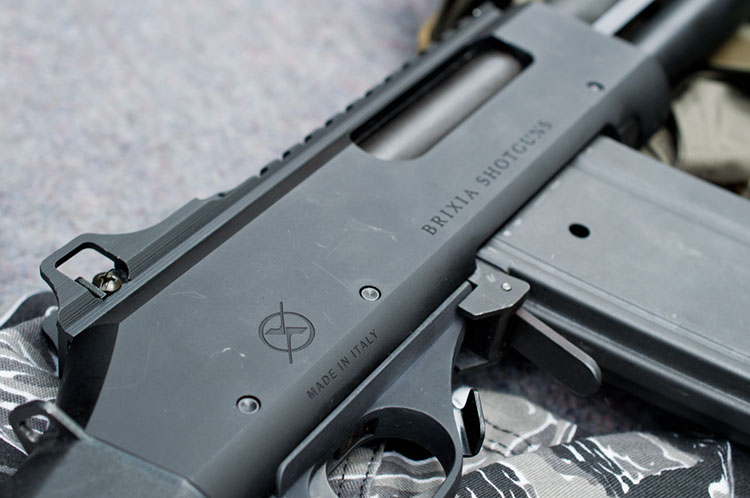
Speaking of the receiver, one of the more noticeable departures from tube magazine shotguns is the sheer size of the receiver itself. The need to offer enough space for a magazine well, while retaining a high degree of rigidity, results in a receiver that is taller, wider, and about two inches longer than a typical pump gun like the Remington 870. Combined with the picatinny rail which further extends the height of the receiver, the visual impression left by the PM-5 is massive. Admittedly there is a bit of a weight penalty to be paid for that kind of bombproof construction, but if you’re buying a PM-5, chances are you know you’re buying a serious artillery piece and a few extra ounces is not going to concern you.
The finish is a lustrous, deep black and is applied using the method Valtro had originally provided for the French Navy contract guns. Inside and out, every surface is treated to this anti-corrosion process and the result is both attractive and practical.
The controls are reminiscent of a Remington 870; there is a button safety at the rear of the trigger guard and the action release works much the way an 870’s does, although the tiny stamped tab of the 870 has been replaced with a large lever running back towards the trigger with a ninety degree bend in it, providing a good-sized flat surface that can be worked with the trigger or middle finger of the dominant hand. We found that the index finger was more intuitive to use, but it requires the user to shift his master grip slightly to operate the action release. That won’t be a concern to any but the most blisteringly fast users, of course, but the release can be operated with the middle finger without breaking the grip, so if you’re really that fast, there’s a way to train around it.
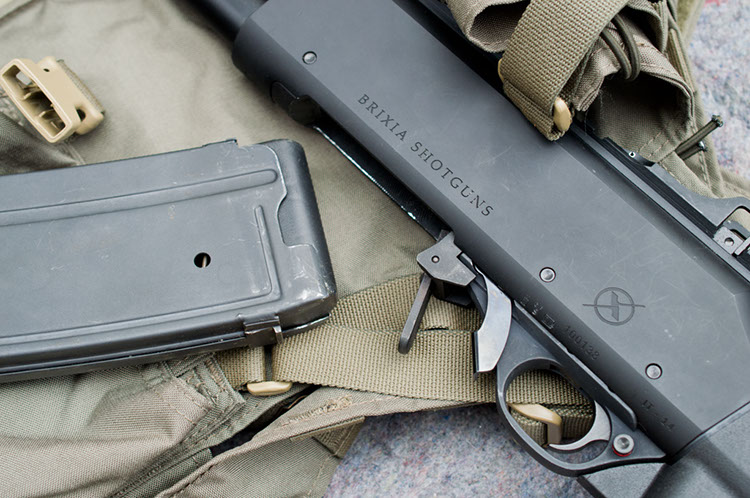
The furniture is simple and effective black plastic; the forearm is fairly well textured and the grip angle on the stock is about right. That’s important, because at this time the aftermarket options are pretty limited. The length of pull is within a few millimetres of a factory 870, although the more vertical pistol grip alters the perception of the distance slightly, and we found that the stock “felt” longer than it was.
The deceptively large feel of the PM-5 may relate to the one dimension that is really noticeably longer: the reach to the forearm is significantly different than your average pump gun. Comparing it to, for example, a plain-jane 870 Express synthetic, the reach is a good two inches longer, simply because of the longer receiver. It’s a natural side effect of designing around a detachable box magazine: no matter what, space has to be left in front of the magazine for your support hand to maneuver. However necessary, though, it does alter your grip and body position in general, tending to increase the blading of your torso in relation to your target. We were curious to see how it would feel to run the PM-5 for an all-day session, particularly since we’d had a good time shooting the similarly-conceived Dagger SAP6 last year.
Once again we loaded up and made the trek out to Abbotsford Fish and Game to train with Claude Murdoch of Abbotsford Tactical Shooters. This time we took his advice and attached a simple single-point sling to the included mount aft of the receiver; regular readers may recall our past attempts to use one of our adjustable two-point carbine slings on the SAP6 resulted in the elimination of the sling’s forward hardware while shooting under a barricade from an awkward position.
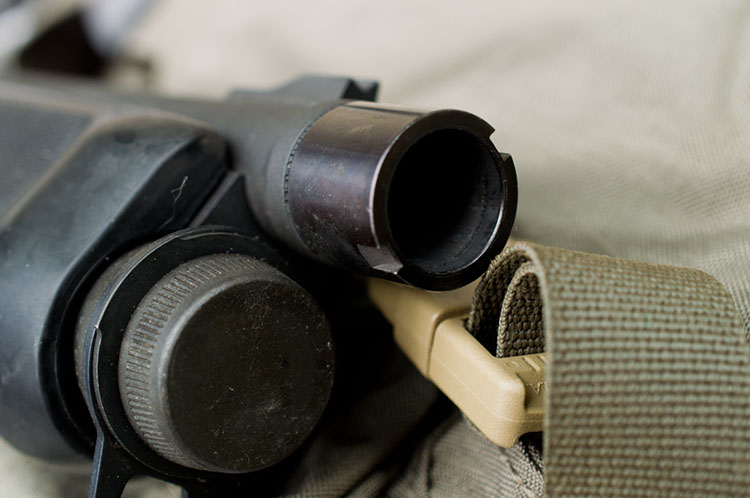
Once the shooting began in earnest, the first thing we noticed was the unbelievably smooth action of the Brixia. It needed a heavy dose of G96 to offset the tight manufacturing which actually slowed the speed with which we could operate the action through their near-zero clearances. But once the gun was thoroughly slicked up, the racking motion was almost bizarre in it’s absence of mechanical sensation. Don’t get us wrong: a conventional pump shotgun can certainly be made extremely smooth and light, but there is almost always a clockwork feel to the action. The PM-5’s action has none of the clickety-clack of a typical pump gun; there’s no shell lifter to actuate, for example. The action is just simpler.
That’s not to say that there are no downsides to the exotic feel of the action. Coupled with the precision machining, it’s possible to induce a fair amount of drag in the system by torquing the pump to one side or another. Naturally no one would intentionally twist the forearm while racking the gun, but strange things happen when Claude Murdoch is barking directions at you as you roll around in mud and gravel, diving behind barrels and under walls with the beavertail of a 1911 digging into your liver. If this gun is on your list for 3 Gun competition, we’d advise a bit of valve grinding compound on the action bars to speed up the break-in. The gun is that tight.
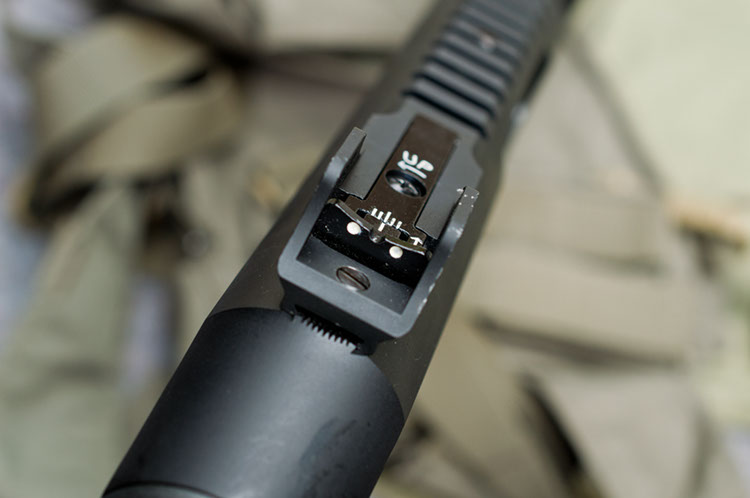
That was a little disappointing, although we admit that there may be no actual practical consequences from this oversight. After all, if you’re buying a railed PM-5, chances are you want that rail for a reason, and that reason is going to be a red dot optic, or what we at Calibre call “cheating”. When coupled with an optic (in our case a Shield CQS) shooting the Brixia is like going from real life to being the hero in an action movie: you can’t miss a shot, and everything you do is suddenly flawless. It’s almost absurd how easy it gets.
Just on principle, though, we feel Brixia ought to get those sights dialed in, even if nobody ever uses them. That’s just fair play on a gun that retails for around a thousand bucks.
What we didn’t notice, however, were any issues stemming from the size of the gun. Certainly it was no featherweight, but then after a few hundred trap rounds, and box after box of buckshot and slugs, we weren’t wishing for a single ounce to be shaved off. The balance is quite good, as well, since the weight of the magazine is closer to the shooter than a fully loaded tube magazine.
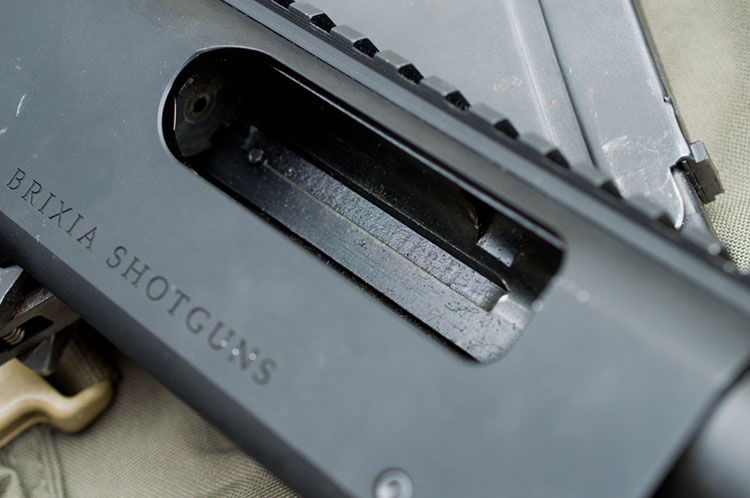
The thread protector on the muzzle did its job, and we didn’t turn the Claude’s 9-hole wall into a 10-hole wall. The extended magazine release is essentially impossible to miss when grabbing an empty magazine, and the classic rock-and-lock motion is pretty quick to master on insertion. The system just works.
The gigantic action release comes in handy from time to time, although it’s less critical on a detachable magazine-fed gun. But it doesn’t interfere with normal operation of the gun at all and any time we can take a go-fast part with no downsides, we want it.
At the end of the day, the only serious complaint we had about the Brixia PM-5 was the mismatched front sight, and only the buyer can identify how serious an issue that is. We’ll admit to some initial disappointment if only because everything else about the Brixia was just that good: we were almost shocked to encounter a genuine flaw. It’s a gunsmithing job to replace the sight, so if you seriously intend to run the irons, well, factor that into your purchase price.
But here’s the reality: a red dot optic on detachable mag-fed shotgun is home defense nirvana, and we’re not buying a railed PM-5 and ignoring the rail.
What we are doing is buying more PM-5 magazines, preferably through a shell corporation of some kind, because we’re really hoping the distributor doesn’t notice that we haven’t given the Brixia back, and we’re not planning on it, either. The PM-5 is going on permanent editorial defense duty.